Inflation is at a 40-year high, led by soaring energy prices reminiscent of the 1970s oil crisis. Whether one attributes rising prices to reckless monetary policy, excessive fiscal stimulus, a pandemic creating shortages, or geopolitical conflict, one thing is certain for Bitcoin miners: rapidly rising electricity rates are here, and it’s going to be a fight for many just to survive.
Casualties have begun rolling in, with Core Scientific warning last week that the company will fail to make debt payments in the coming months, echoed Monday by Argo Blockchain’s similar notice.
Amid shrinking mining revenue and increasing operational costs, let’s examine the importance of choosing the right location for your Bitcoin miners to outlast the bear market.
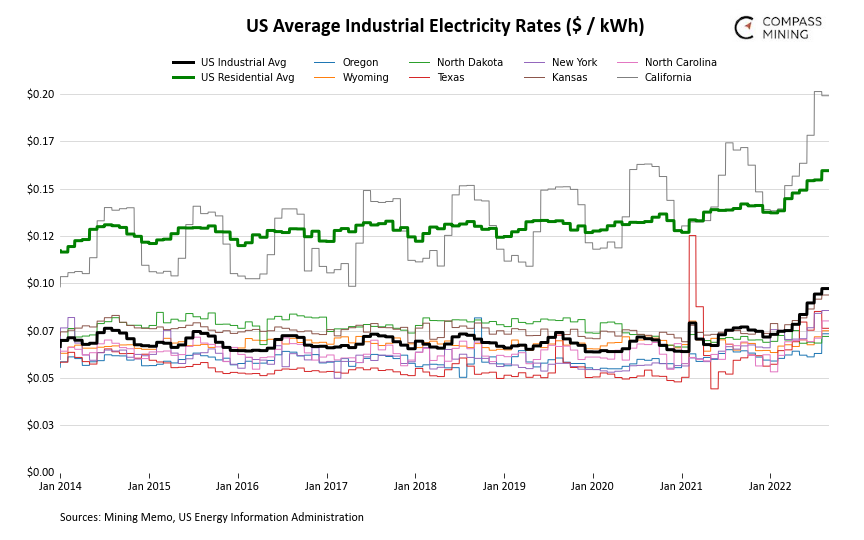
During the height of the 2021 Bitcoin mining bull market, it was common to see the promotion of home mining as a passive income source. Idealists in the community envisioned a distributed network of Antminer S9s printing non-KYC money in backyards across the country. Revenue per hash has since collapsed, putting this cypherpunk dream on hold as it is no longer profitable to operate an Antminer S9 anywhere in the United States at industrial electricity rates. At residential electricity rates it’s even worse, with estimated annual losses now approximately twice the purchase price of the machine.
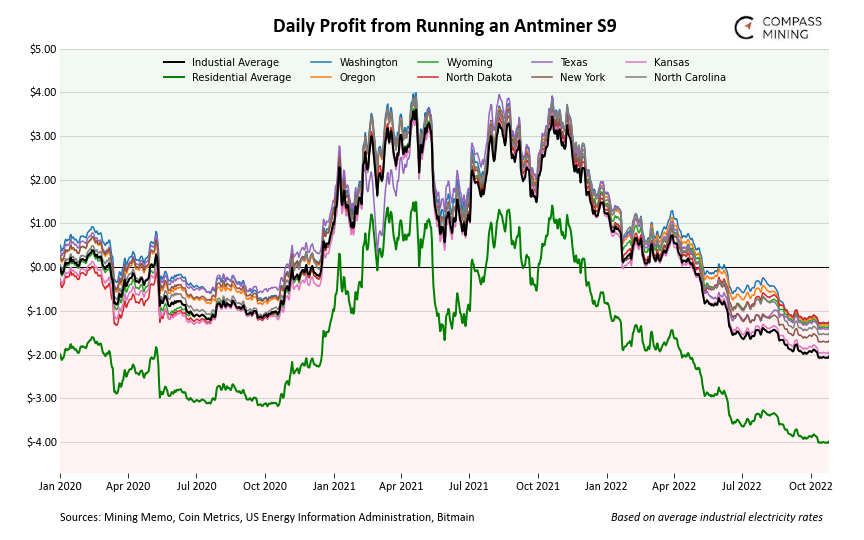
Looking at a more modern mining rig, the Antminer S19, a year ago the largest challenge was getting rack space operational; smaller mining operations were at times location-agnostic as revenue far surpassed electricity input costs and companies raced to get hashrate online however and wherever they could. For the better part of a year, even rack space in California at industrial electricity rates would have been a viable option. Today, that is certainly not the case.
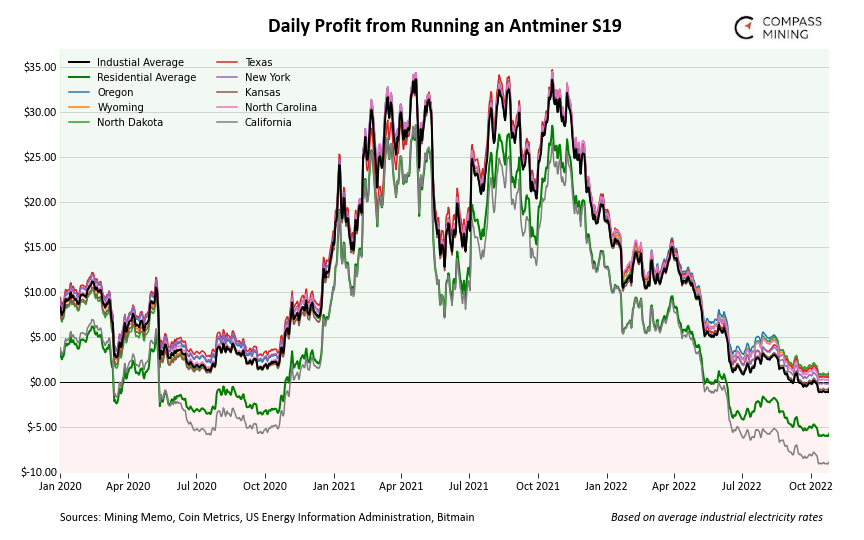
Swapping from daily profit per machine to the current profit margins for the device, it’s clear that location is paramount in the current era. The once almost-attractive California rack space would be a disaster at current rates: the average industrial cost of electricity in the state is now over double the expected revenue that can be expected from the resulting hashes of the latest generation of miners.
The price of Bitcoin would need to climb back to $45,000 for hashes from a S19 in California to break even today. Nationwide residential rates are not far behind, with a breakeven mining price over $35,000.
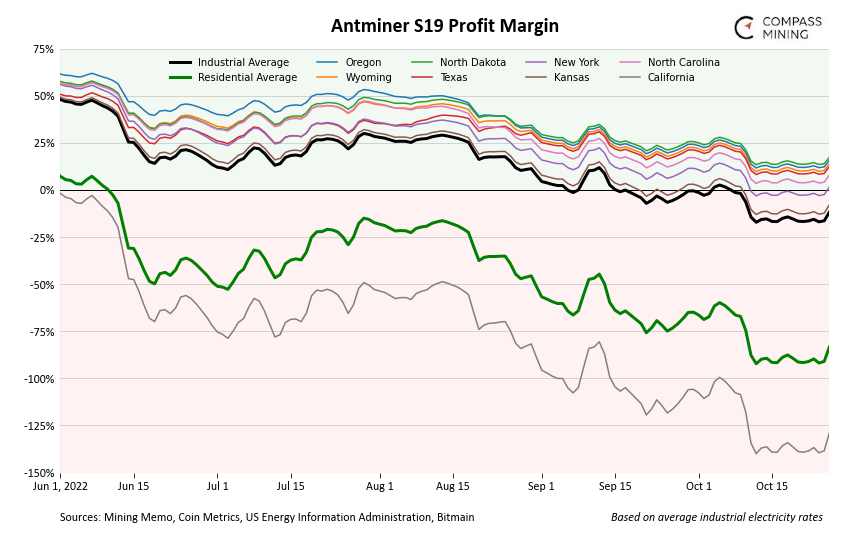
Even historically appealing energy markets in areas like Kansas and Louisiana are currently not economically viable at average industrial electricity prices. Yet, despite the tight margins, some states like North Dakota, Texas, and Washington remain profitable, providing miners the best chance to outlive their domestic competitors.
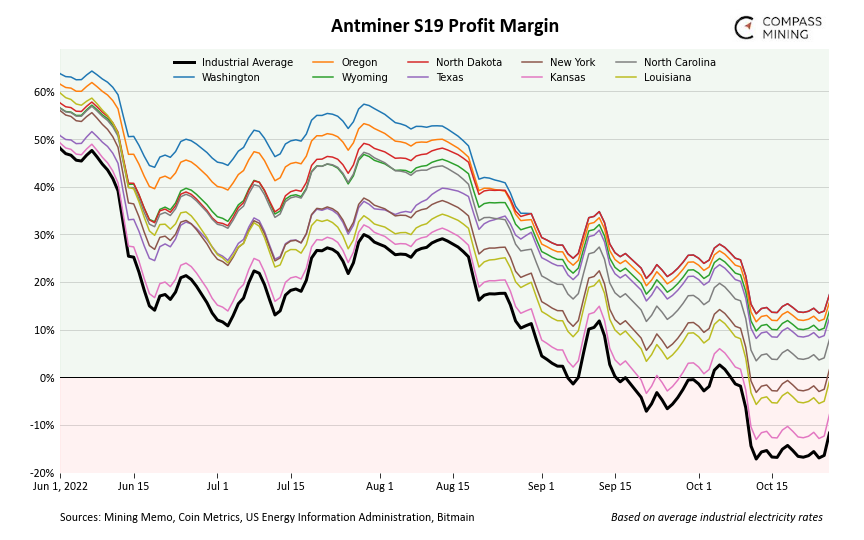
Undeterred by rising energy prices, many large miners remain committed to aggressively growing their market share. Although higher electricity prices will put pressure on margins and slow growth, we should expect to see a continued rise in total hashrate. This will no doubt be coupled with capitulations from miners who were unable to secure cheap energy during the mining bull market and now have insufficient cash flow to cover their operations.
What’s clear today is that the era of printing free money in your backyard is over. In this low-revenue-per-hash environment, it’s more important than ever to optimize every aspect of your Bitcoin mining setup, and one of the key pieces is securing access to negotiated industrial rates and behind-the-meter electricity. Home mining on residential electricity prices is simply impractical going forward.

